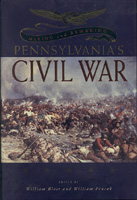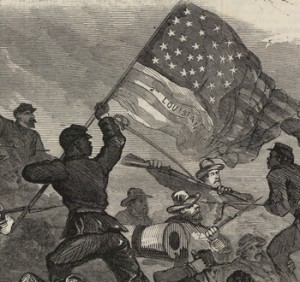The 41st USCT Regiment was organized at Camp William Penn in the fall of 1864. This regiment participated in several engagements in Virginia:
- “On the 27th of March [1864], in connection with the Twenty fourth Corps, under command of General Ord, to the Second Division of which it now belonged, it move to join the Army of the Potomac, arriving at Hatcher’s Run on the 29th. It was immediately ordered upon the front, where it threw up breastworks and skirmished with the enemy. On the 2d of April, it was engaged before Petersburg, losing one killed and eight wounded, and at evening moved in pursuit of the rebel army, following the line of the South Side Railroad. The pursuit was pushed with little interruption until the regiment reached Appomattox Court House, where, on the 9th, while upon the skirmish line, Captain John W Falconer was mortally wounded, dying on the 23d.”
After Confederate General Robert E. Lee surrendered at Appomattox on April 9, 1865, the 41st USCT regiment was sent to Texas. The regimented was stationed there until the men were mustered out of service at Brownsville, Texas, on November 10, 1865. The full summary of the 41st USCT Regiment’s actions during the Civil War as well as the complete muster roll is available through Google Books in volume five of Samuel P. Bates, History of Pennsylvania Volunteers, 1861-5 (1871).


























